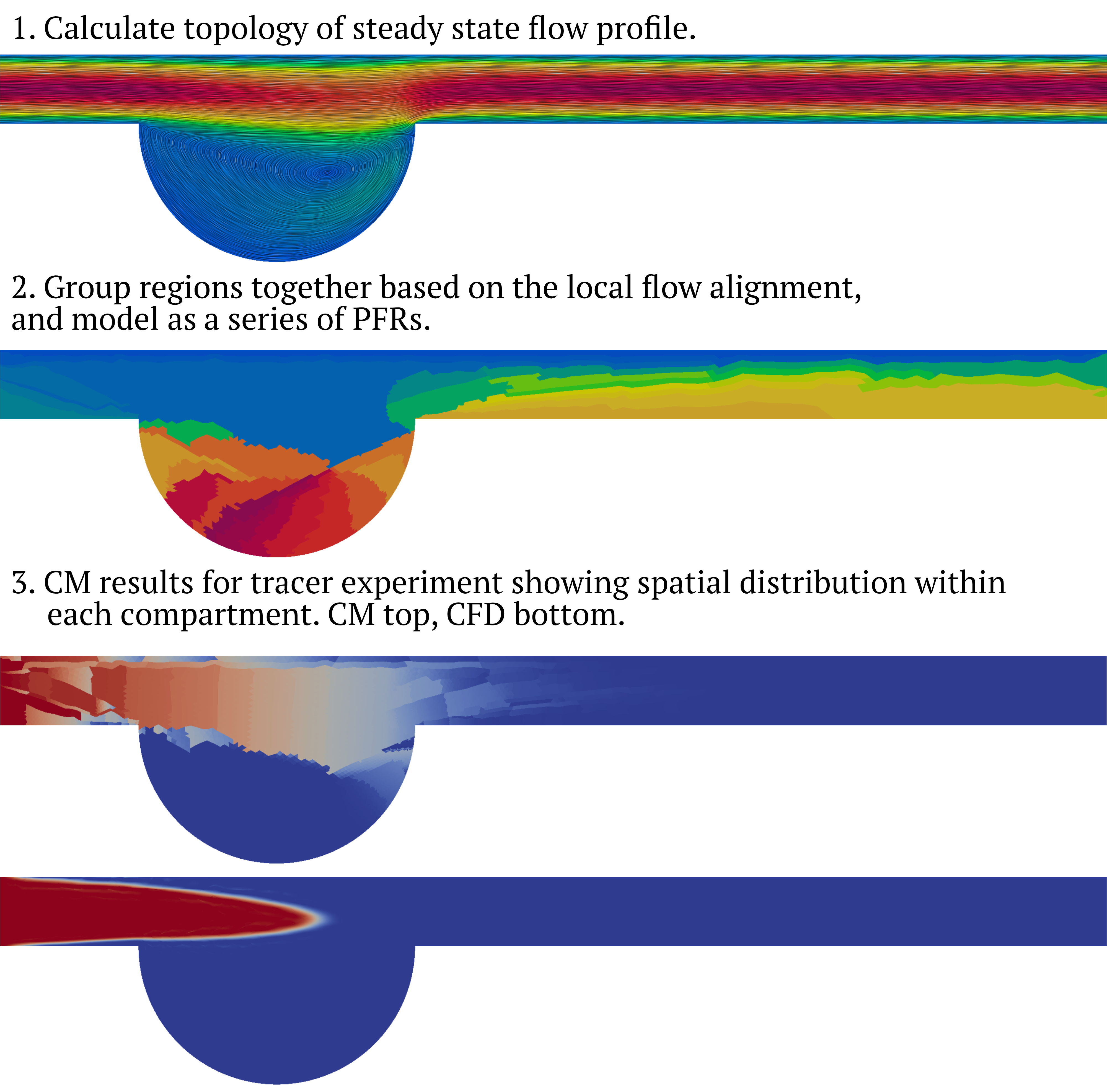Breadcrumb
- Home
- Publications
- Proceedings
- 2023 AIChE Annual Meeting
- Computing and Systems Technology Division
- Industrial Applied Mathematics
- (413c) A Generalized Flow-Alignment-Method for Compartmental Modeling

The proposed compartmental model method is informed by single-phase multi-component computational fluid dynamics (CFD) simulations, which also act as the reference solutions for validation. The CFD simulations are performed using a discontinuous Galerkin finite element method solver for the incompressible multicomponent Navier-Stokes equations, as implemented in OpenCMP, which enables a common software interface (Python) between the CFD solver and the reference implementation of the compartmental model. Steady-state velocity fields from the CFD simulations are used to generate compartments and intercompartmental flows. The compartmentalization paradigm used is flow-alignment based, where the average flow direction in each mesh element is used to group it with its neighbours using a local alignment measure such that each compartment contains a set of connected mesh elements that are well described by a unidirectional flow model.A post-processing step is performed, merging any connected compartments below a user-specified size threshold to provide further reduction in the computational complexity. Then, the overall model for each compartment is derived as a series of plug-flow reactors (PFRs) with inlets/outlets connected to other compartments and/or computational domain inlets/outlets. Multiple inlets/outlets to a compartment, i.e. side flows, are modelled by adding more PFRs in series to a compartment, which each new PFR being added at the location of a side flow. The resulting PFR network model is solved numerically using finite difference-based spatial discretization, using an upwinding scheme for stability.
The presented compartmental model method is validated using two different geometries, a simple channel with partial recirculation, and a complex microfluidic static mixer for which experimental performance results are available. Additionally, the performance of the PFR-based compartment model is compared to more traditional compartment models based on CSTRs. Two CSTR-based models are tested, one using a single CSTR for each compartment and another which uses CSTRs in series. The resulting model was numerically solved using high-order implicit time integration with adaptive time-stepping. The three variations of compartment models are validated against reference CFD simulations and, for the microfluidic static mixer, against available experimental results. Validation is performed through quantitative comparisons of the residence time distributions of an injected tracer. It was found that the choice of model (PFR, CSTR, or series of CSTRs) for each compartment has a significant impact on the resulting accuracy of the predicted residence time distribution. The use of PFRs as compartment models, which in congruous with the compartmentalization criteria, resulted in the prediction of residence time distributions that are quantitatively most similar to that of the reference CFD simulations and experimentation. Furthermore, using a network of CSTRs to approximate compartments was found to be more accurate that using a single CSTR, but less accurate than the PFR-based model.
There are several notable results found in this work. First, it is shown quantitatively that the criteria for compartmentalization and the corresponding compartment model should be congruous, which does not always support the use of CSTR compartment approximations. Second, a generalized flow-alignment-based method for compartmental modeling is presented, validated, and compared to traditional compartment approximation methods. Finally, the presented method is found to be more accurate than CSTR-type compartment approximations with respect to predicted residence time distributions of an injected tracer. These results support further development of flow-alignment based compartmentalization methods and higher-dimensional compartment models.